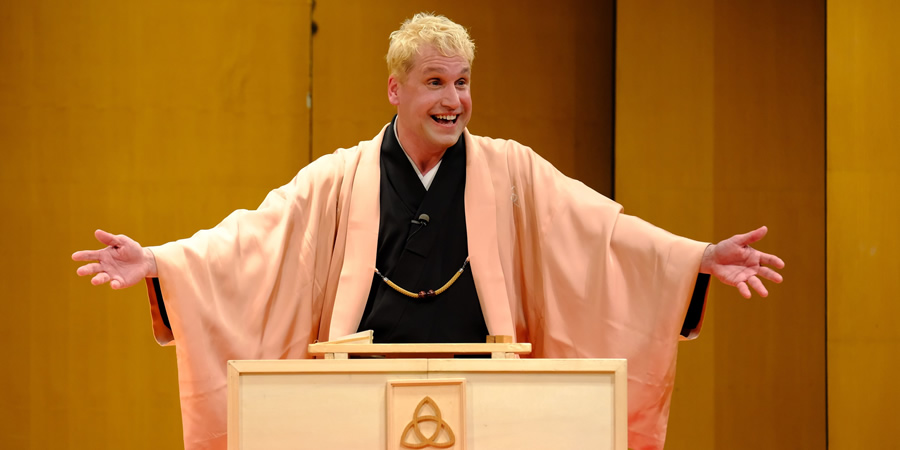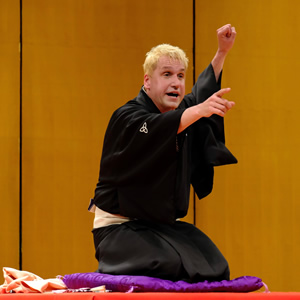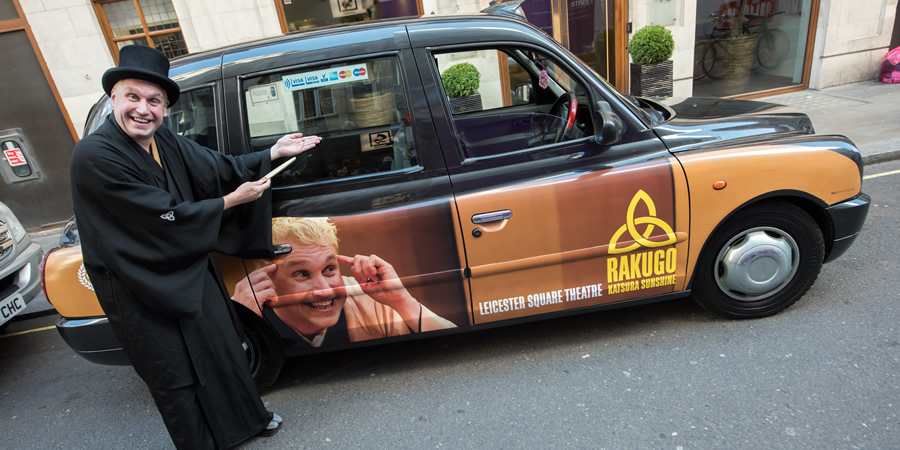What is Rakugo? Katsura Sunshine explains

Katsura Sunshine talks about Rakugo and how he became the first Western Master bringing the comic Japanese artform to London...
Rakugo is the 400-year-old Japanese tradition of comic storytelling. It's a classic art that is very much alive, with over 800 professional storytellers practicing and filling theatres in Japan today. The stories are thought to have originated as short comic anecdotes that Buddhist monks inserted into their sermons to hold people's interest.

Rakugo is a minimalistic performance featuring a lone storyteller dressed in a kimono, kneeling on a cushion, using only a fan and a hand towel for props to entertain the audience with a comic monologue followed by a traditional story. The story is told through dialogue with the Rakugo artist differentiating characters by subtle head movement, changes in tempo, posture and intonation.
A canon of several hundred traditional Rakugo stories are widely performed today. Stories feature the comical and occasionally absurd shenanigans of stock characters common to neighbourhood life in Edo-Period Japan, and vary in length from 10 to 40 minutes, occasionally even longer. In addition to these traditional stories, some storytellers also compose their own. The most famous composer of modern Rakugo stories, Katsura Bunshi VI, has over 200 stories to his name, and he mostly performs his own repertoire.
Every Rakugo story is preceded by a comic monologue - the individual storyteller's own material which can be about almost anything, much like stand-up comedy. Often this monologue is an opportunity for the storyteller to present hilarious explanations of how to enjoy and appreciate Rakugo stories, so that even the uninitiated can easily follow the story once it begins. Traditionally, the monologue is also used by storytellers to "feel out" their audience and decide which story to tell.
I was born in Toronto, Ontario, to parents of Slovenian origin. Rakugo was therefore not first in my thoughts!
I studied classics at the University of Toronto and became involved in translating, adapting, and performing in versions of Aristophanes' comedies for the Department of Classics. My version of Aristophanes' Clouds ran for 15 months at the Poor Alex Theatre in Toronto and toured central and eastern Canada. I continued to write and produce musical theatre when I went to Japan to pursue studies in Noh and Kabuki Theatre which is when I became interested in Rakugo.

In 2008, I received the great honour of being accepted as an apprentice to the great Rakugo storytelling Master, Katsura Bunshi VI. That's when the hard work really began!
To become a recognised professional Rakugo storyteller you have to become an apprentice to a Rakugo master, from whom one receives a stage name. The apprenticeship lasts for three to four years, and is very strict. Depending on the master, you are not allowed to drink, smoke, or go on dates, and are subject to a strict curfew. You clean the master's house, do the laundry, cook, prepare and fold kimonos, and other chores. You are only able to perform a story once permission has been granted by a master storyteller.
I made my professional Rakugo debut in Singapore in 2009 and completed my three-year apprenticeship in November, 2012 to become the first ever Western Rakugo storyteller in the history of the "Kamigata" Rakugo tradition, based in Osaka, and only the second ever in the history of Japan.
Since then I have performed around the world in Africa, Asia, Australia, Europe and the US. Rakugo is quintessentially Japanese but universally appreciated.

To find out more about Katsura visit katsurasunshine.com
Help us publish more great content by becoming a BCG Supporter. You'll be backing our mission to champion, celebrate and promote British comedy in all its forms: past, present and future.
We understand times are tough, but if you believe in the power of laughter we'd be honoured to have you join us. Advertising doesn't cover our costs, so every single donation matters and is put to good use. Thank you.
Love comedy? Find out more
